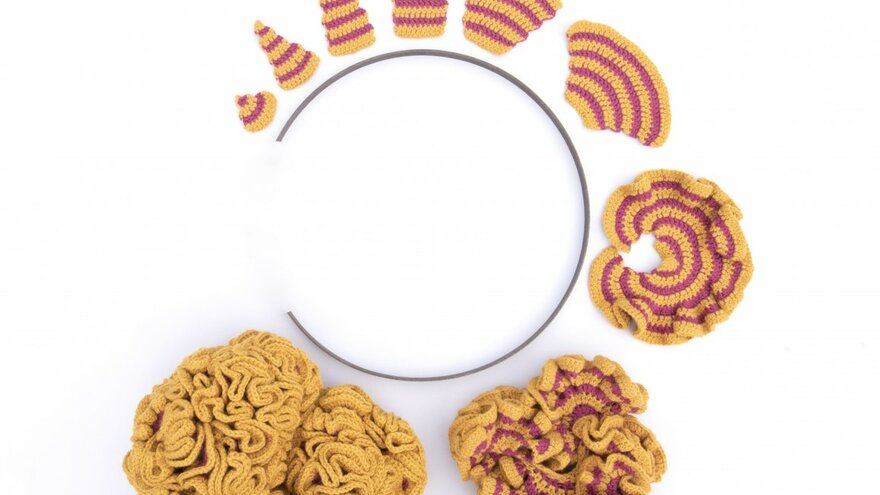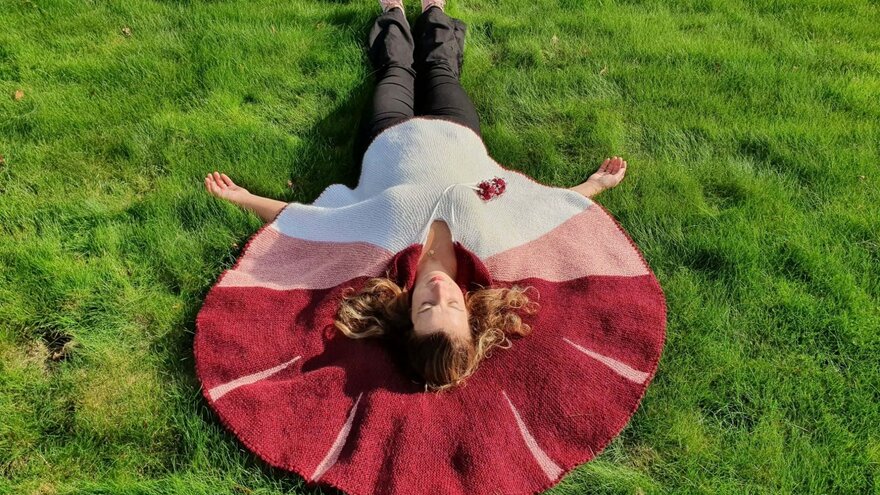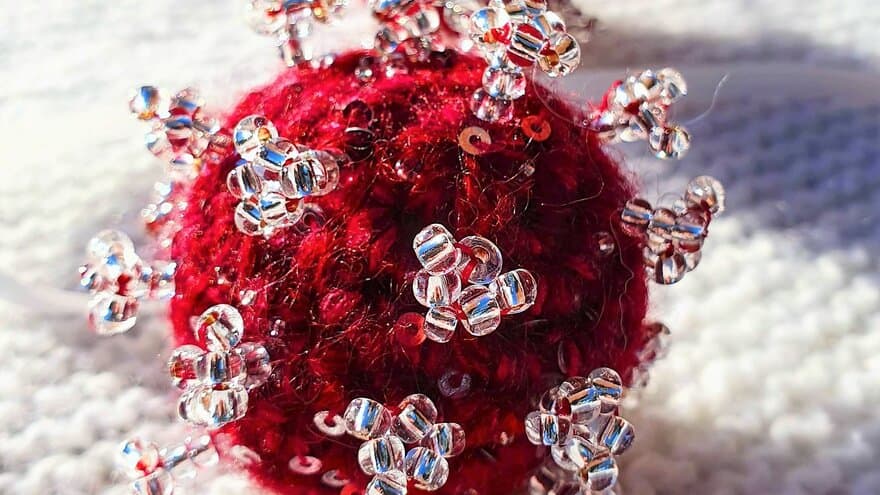When statistician Kathrine Frey Frøslie explained the R-number using crochet, the video went viral in Norway. Her knitted and crocheted corona art is now available in English, and on display in an international corona exhibition from UNESCO.
The UNESCO-exhibition - Creative Resilience - Art by Women in Science - showcase the artistic works by women of science, on the reaction to and fight against the pandemic of Covid-19.
It will run parallel with UNESCO's 41st General Assembly from 9 to 24 November, and is available until 1 December at UNESCO's headquarters in Paris - and digitally in a virtual 360 ° gallery that can be experienced with VR glasses, PC or a smart phone.
Dr. Kathrine Frey Frøslie, Associate Professor in Biostatistics at The Norwegian University of Life Sciences (NMBU), knits and crochets statistics and research results, and runs the popular science knitting blog Statistrikk.no.
Popular video explained epidemic R-number through crocheting
In October 2020, she published a video, in which she used crochet patches to visualize and explain the much talked about R-number (infection number) - thereby visualizing the spread of Covid-19.
NMBU's communication department made a tailored, unsponsored version for Facebook in mid-November, and, according to their records, 1,1 million (out of a total population of 5,4 millions) Norwegians had seen the Norwegian version by the end of 2020.
An English version of the video is one of three works exhibited by UNESCO under the headline “Hard facts in soft materials”.
"The size of the R number has been crucial for decision makers during the pandemic, and officially recommended precautions and high vaccine coverage is the only way out of the pandemic. It has been of uttermost importance to communicate clearly to the general population, to retain trust and hope in a difficult time. However, exponential growth, the R number and herd immunity are not intuitive concepts, and simple and good explanations have been necessary," Frøslie explains.
Frøslie’s three artworks at the exhibition include:
1. The crocheted covid-19 R number
The artwork is a series of crocheted patches that can help people understand the news.
The patches show how the spread of the Corona virus develops over nine generations of the infection, for different values of values of the infection number R. Each patch starts with ten infected cases.
With R=1, the situation is stable, but the number of infected persons will be constant, and the corresponding patch is rectangular. If the R number falls below one, the number of infected people will decrease, the width of the corresponding patches get narrower, and the disease will eventually vanish.
If the R number exceeds one, the number of diseased will increase, and the epidemic unfolds. The corresponding patches get wider and wider, until they curl up, as can be seen for the patches visualizing R=1.5, R=2.0, and the monstrous R=2.5 crochet ball. This communicates exponential growth and the danger of ignoring official recommendations, differently, and maybe more effectively, than most 2D visualizations.

2. The corona poncho
The poncho is wearable and lovely, with a soft mohair finish, and with beaded, dusty pink uncertainty wedges. Even the pompoms, gracefully designed as beaded corona-virus, may be considered beautiful. But this is really a statement piece. The poncho illustrates herd immunity, given a basic reproduction number (R0) of 2-3, and a 100% effective vaccine. If the poncho is spread flat, it shows a pie chart, of which 50% is dark red.
This is the vaccine coverage needed if we are to obtain herd immunity, given that the R0 is two. But, according to the uncertainty in the estimates of Spring 2020, R0 might be three. If so, as many as 67% of the population need to be vaccinated. This is shown as the combination of the dark red and the pink wedges. The white is the part of the population that is protected by the mass vaccination, given a 100% effective vaccine.
But estimating R0 is hard, and the virus mutates. By August 2021, researchers suggested that the SARS-CoV-2 R0 may be as high as nine. Hence, vaccine coverage must be much higher than indicated by the poncho.

3. Distancing, togetherness and woollen sitting mats
To combat the pandemic, we need distancing. With some knowledge of viruses and epidemiology, we may understand perfectly well why these measures are taken. But social distancing is still exhausting.
Humans are social creatures. We thrive from interaction with people around us. Frøslie designed and made generous and warm, woollen sitting mats for her colleagues and friends, so they were able to meet outdoor at safe distance, be together and still feel the warmth of togetherness.
Aims both to entertain and to enlighten
"As a science communicator and popular science knitting blogger, I have toured knitting festivals for years, with a previous version of my crocheted R number patches and vaccination coverage ponchos for pertussis and measles. The feedback has been overwhelmingly positive: “Now, I finally, really understand this!”. Hence, when the SARS-CoV-2 spread, I knew I had to make a special version of my crocheted and knitted designs," she says.
"I want to enlighten and amuse people with statistics and science, and enable them to make informed and good decisions regarding the authorities’ guidelines and their country’s vaccination program.
I want them to first see the beauty of a good design and good handcraft, and then pause to take in and reflect on the underlying topics. I want my tactile visuals to create mental images that spark joy and remind them about the concepts they are trying to understand. And I want to give them a soft reminder about how we can be generous and kind to each other during difficult times," she concludes.
Frøslie's art work has also been exhibited at Greve Museum in Denmark this year, as part of the exhibition CoviDesign - textile art and handicrafts from the quarantine era.
